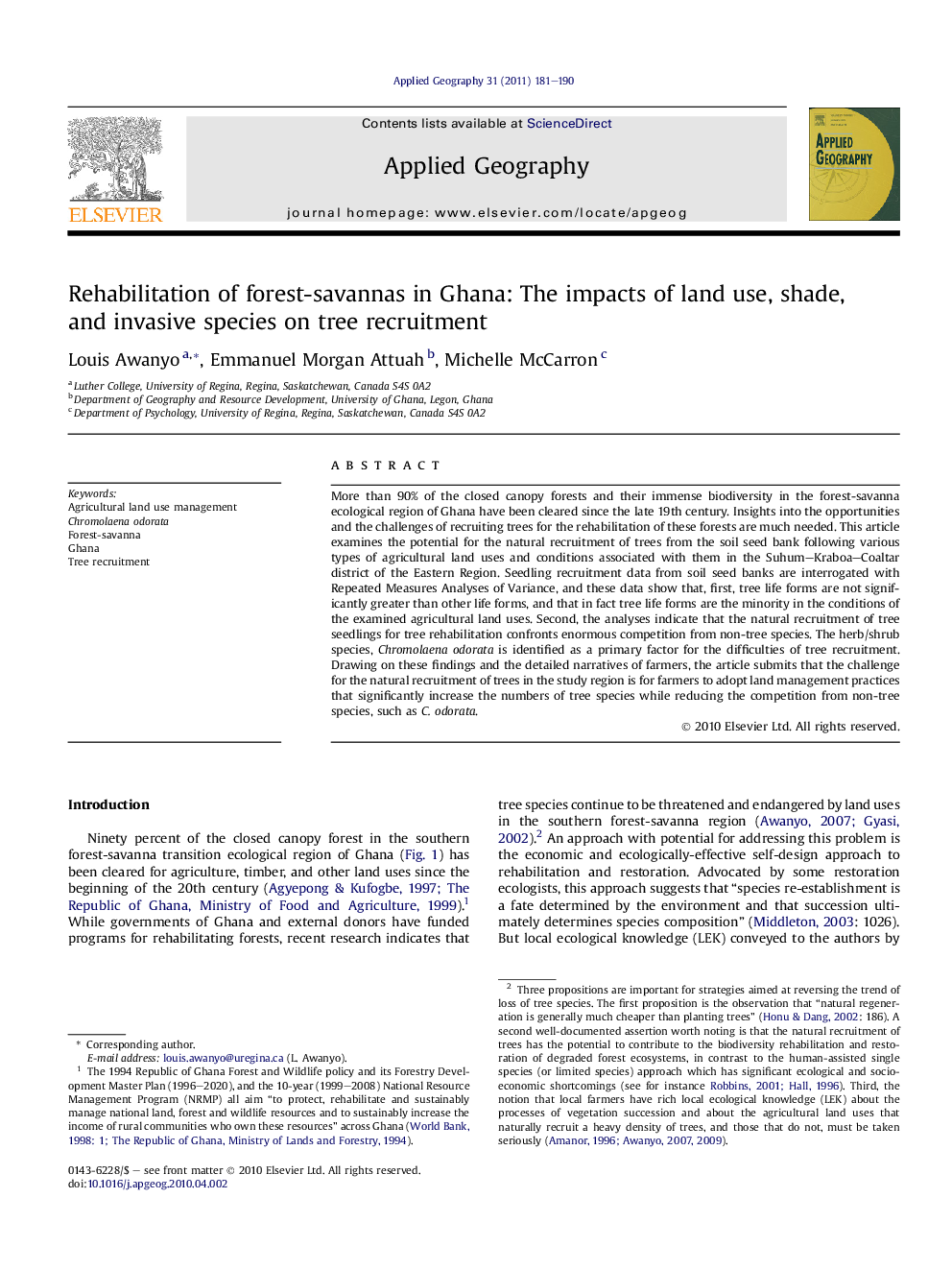| Article ID | Journal | Published Year | Pages | File Type |
|---|---|---|---|---|
| 83384 | Applied Geography | 2011 | 10 Pages |
More than 90% of the closed canopy forests and their immense biodiversity in the forest-savanna ecological region of Ghana have been cleared since the late 19th century. Insights into the opportunities and the challenges of recruiting trees for the rehabilitation of these forests are much needed. This article examines the potential for the natural recruitment of trees from the soil seed bank following various types of agricultural land uses and conditions associated with them in the Suhum–Kraboa–Coaltar district of the Eastern Region. Seedling recruitment data from soil seed banks are interrogated with Repeated Measures Analyses of Variance, and these data show that, first, tree life forms are not significantly greater than other life forms, and that in fact tree life forms are the minority in the conditions of the examined agricultural land uses. Second, the analyses indicate that the natural recruitment of tree seedlings for tree rehabilitation confronts enormous competition from non-tree species. The herb/shrub species, Chromolaena odorata is identified as a primary factor for the difficulties of tree recruitment. Drawing on these findings and the detailed narratives of farmers, the article submits that the challenge for the natural recruitment of trees in the study region is for farmers to adopt land management practices that significantly increase the numbers of tree species while reducing the competition from non-tree species, such as C. odorata.
